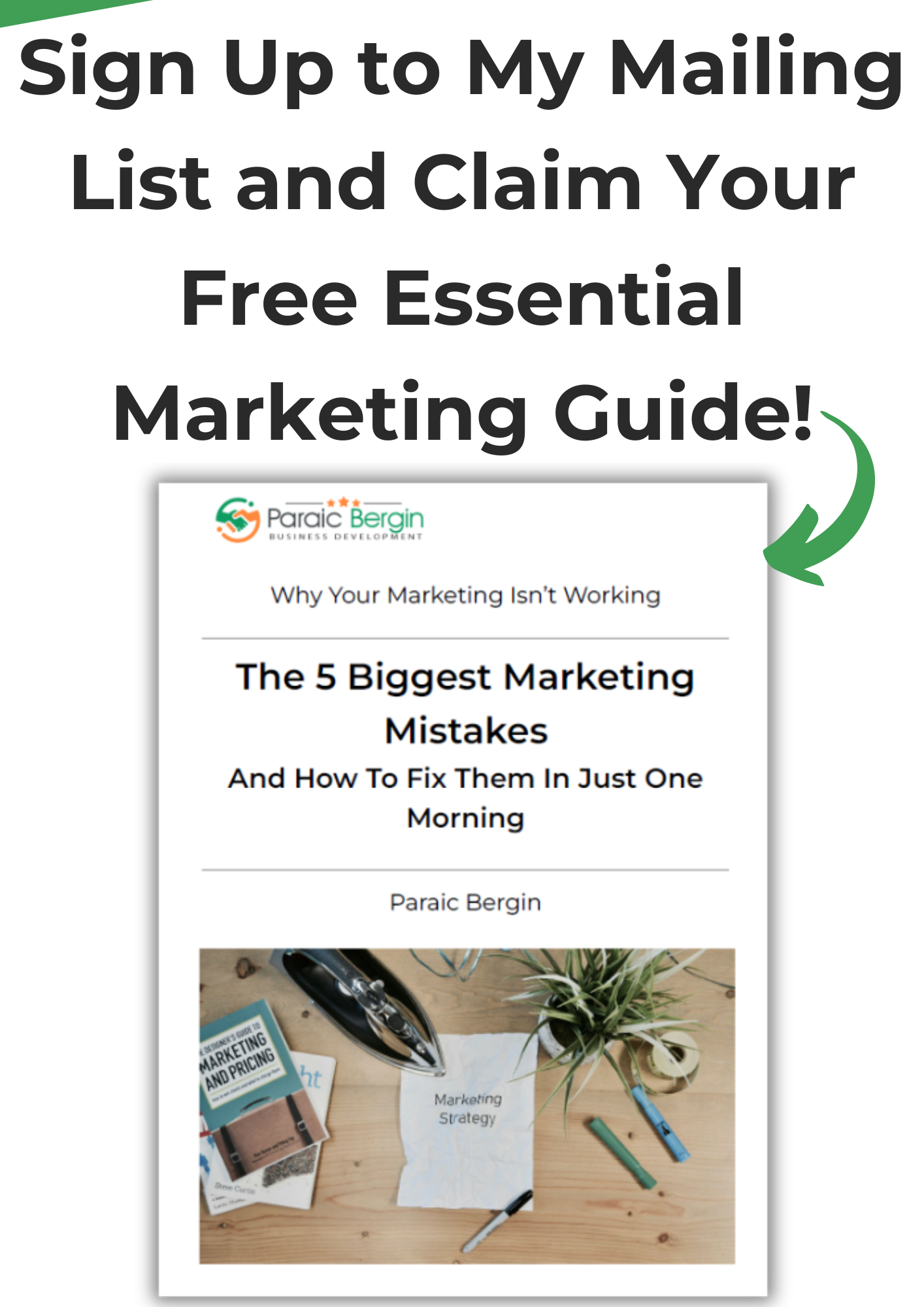How to Seize Control of Your Business and Unlock Hidden Profits
 Running a business can feel like juggling a million things with no big reward in sight. Do you find yourself…
Running a business can feel like juggling a million things with no big reward in sight. Do you find yourself…
- Getting overwhelmed by relentless demands?
- Wasting time and energy on tasks you’re not great at?
- Losing track of what truly counts?
You’re not alone.
With over 30 years’ experience in business management and consulting, I know the pitfalls and errors that can bring businesses to the edge of failure – and I know how to turn them around.
“Paraic started a transformation in me that I never expected, in the way I think about business, think about life and how to have a solution based focus”
– Kieran Callaghan, CEO of Callaghan Electrical
What Every Business Owner Needs To Know
Using these 3 key practices, you can streamline operations, amplify profits, and lighten the load:
1. Pareto Principle (80/20 Rule)
Pinpoint the 20% of tasks that produce 80% of the results.
2. Statistical Process Control
Uncover the problem, root out the cause, and erect systems to boost performance.
3. Pearson’s Law
What you measure improves; what you measure and report on improves exponentially.
“Paraic is a great asset to any company wishing to change their marketing focus and increase their turnover in any climate”
– Keith Nolan, Owner of Athlone Printing
The Four Pillars of Business Success
A successful business needs:
- Marketing: Captivate, engage, and retain your best customers.
- Innovation: Stay ahead by evolving and elevating performance.
- Numbers: Focus on the crucial metrics and enhance continually.
- Differentiation: Stand out with a unique proposition.
Nail these, and watch your business thrive.
The Simplest Way to Spike Sales
Want to rake in more cash? Focus on your existing customers, rather than chasing new ones. Stellar customer care means more repeat sales and profit, and it’s a cinch to initiate.
“Paraic has done an excellent job of identifying ways to improve our sales and focusing our efforts to make that happen”
– Esther Zyderlaan, Owner of Slieve Aughty Riding Centre
Unveiling The “Hidden Factory” That Drains Profits
Armand Feigenbaum revealed how many businesses unknowingly hemorrhage profits. These sneaky ‘little’ issues linger because they seem minor or just the norm. Rectify them, and you double or triple your profits – without additional effort, staff, or sales.
I Can Help You Transform Your Business
In my 30+ year-career, I have worked with businesses of all shapes and sizes, in many different industries worldwide. I specialize in analyzing strengths and weaknesses, setting realistic, achievable goals, and reorganizing and restructuring businesses to turn failure into profit.
👉 Don’t miss out!
Sign up now and claim your essential free Marketing Guide.





